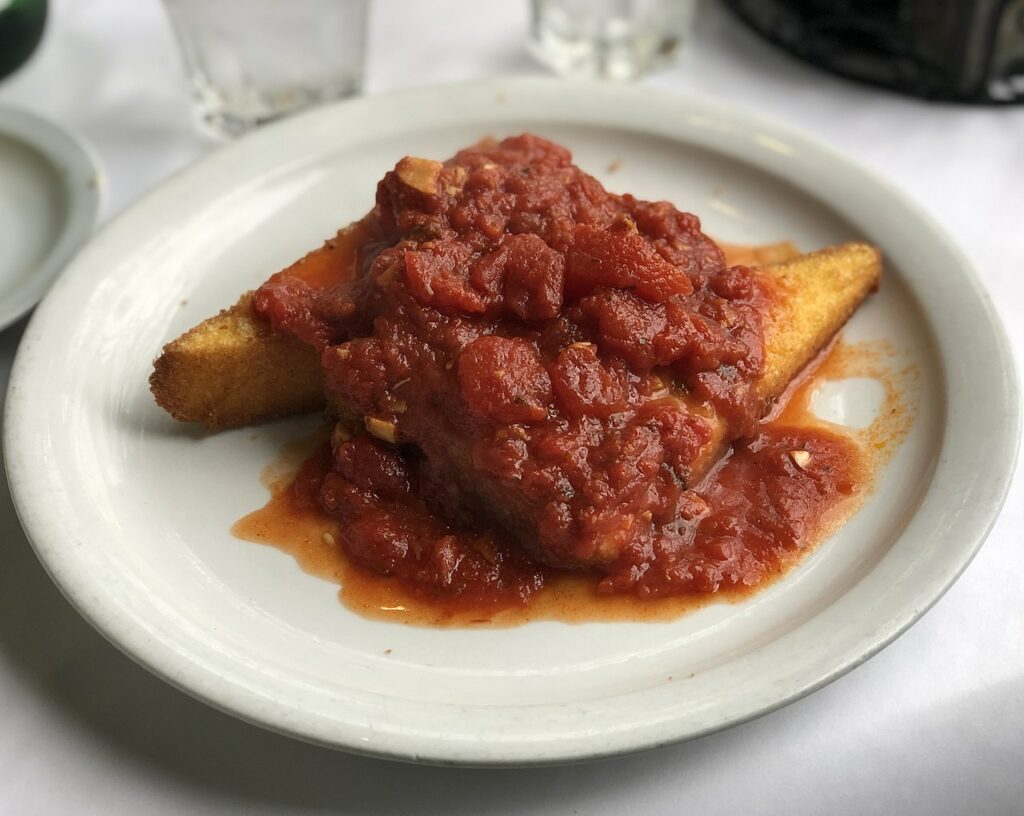In the 1500s, Venetian merchants got ahold of new goods from the New World — the Americas had just been ‘discovered’, and people were excited to try the new foods. Among these new foods was a plant called ‘corn’, or as Venetians (and most countries) called it, mais or maize.
The Venetians were also eager to trade this new good for a profit, and the plant proved excellently suited for the Italian plains, so corn became fairly common in many parts of today’s Italy, as well as the neighboring areas of Switzerland and Slovenia. Not long after that, Turkish merchants brought corn to eastern Europe and the Balkans, and corn became a hit in Romania, which like Italy, features some ideal plantation spots. Thus, a new plant became a staple in parts of Europe.
But getting one plant to grow is just the first part of the story. Finding ways to cook it is equally important. It didn’t take long for the Italians, the Romanians, and all the other people growing corn to figure out the same thing: you can grind it into a type of flour. You can then boil that flour, either by itself or with something else, and you end up with something that’s versatile and filling, especially for something coming from a simple plant.
Thus, the polenta was born.
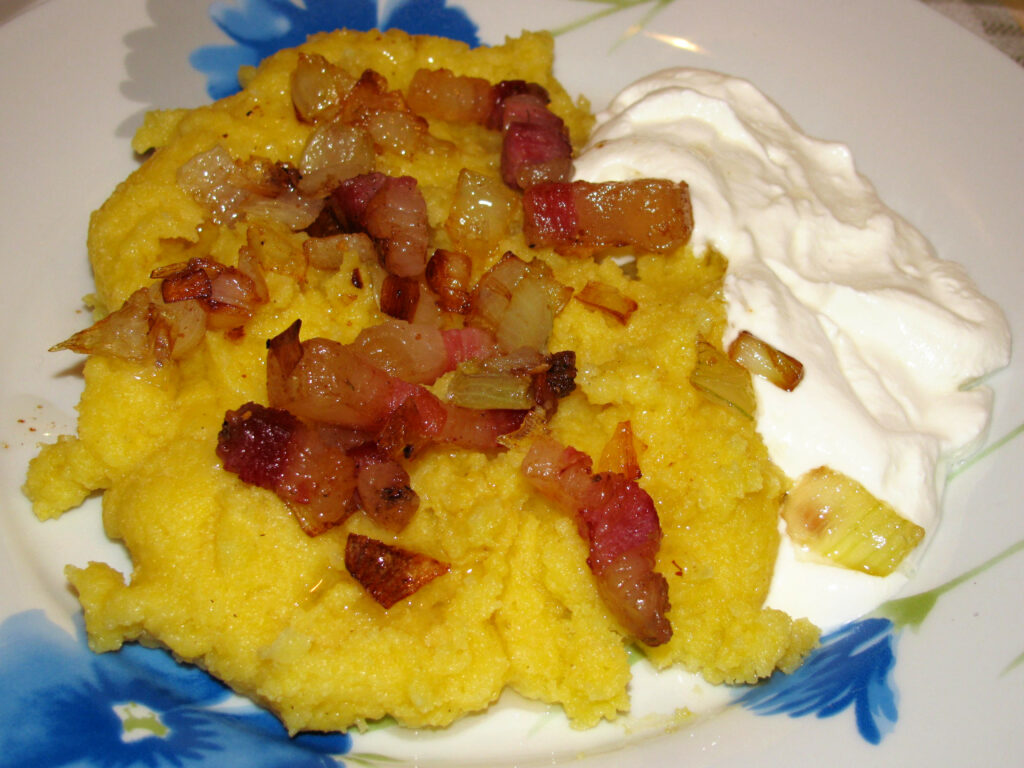
A food made for hard times
Polenta, like so many historic foods, has humble origins as a food for the lower classes of society (especially peasants). Today, polenta has come a long way from being a mere cornflour mush — you can find it in the fanciest Mediterranean restaurants as well as households all around Europe.
But it wasn’t always like this. No, polenta and hardship went hand in hand for centuries. As the impoverished peasantry from Italy to the Balkans struggled to make end’s meet, polenta seemed a godsend. A warm, versatile, and seemingly nutritious food, it was quick to complement or replace other porridges (made from things like wheat, millet, or chickpeas). The good news is that it helped many European regions get through hunger for centuries. The bad news is that it wasn’t as nutritious as it seemed.
By the 18th century, more and more peasants were starting to suffer from a degenerative disease called pellagra, caused by the lack of vitamin B3.
Indigenous peoples of the Americas had learned the hard way that cornflour is deficient in niacin, an essential amino acid. They would boil dried corn kernels with lime or wood to release niacin, a process called nixtamalization. They would be careful to complement their corn intake with the likes of beans and tomatoes. Entire generations of Europeans had no idea of this process and paid dearly for their ignorance.
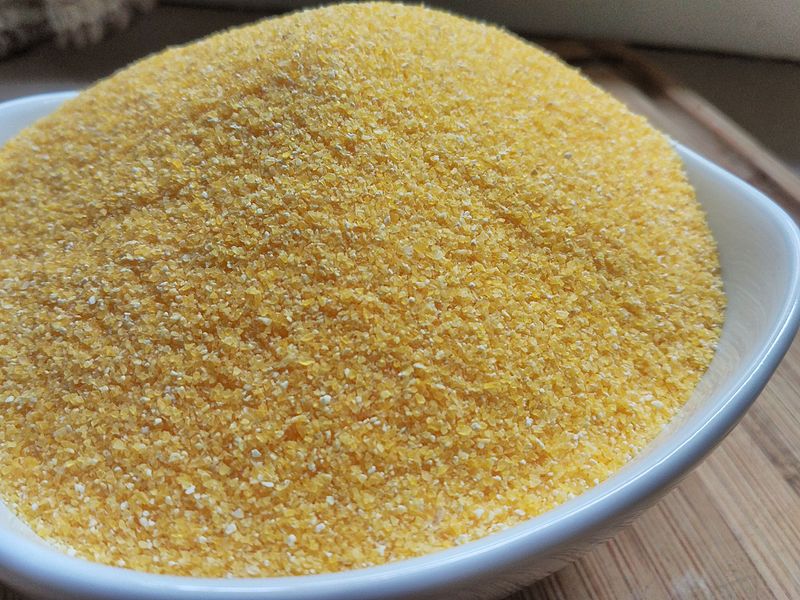
Since the second half of the 1700s it was noted that the spread of the disease went hand in hand with the consumption of polenta in Italy. Pellagra became a common sight in the Italian regions where farmers would consume almost exclusively polenta. The problem continued for centuries. According to a survey in 1878, 9 in 10 sufferers of pellagra in Italy were from the areas of Veneto, Emilia, and Lombardy, where polenta was most common.
Old saying: I faxúi e la polenta i é la carne de la zente poareta – Beans and polenta are the meat of the poor
Rather surprisingly, the problems with pellagra moved back to the Americas (especially North America). According to data from the US National Institutes of Health, about 3 million Americans developed pellagra between 1907 and 1940, especially in the southern States.
Hungarian-born physician Joseph Goldberger finally figured out that it wasn’t a toxin in the corn that was causing the problem. Goldberger experimented in a few Mississippi orphanages, feeding some children a more varied diet; their pellagra improved, while for others, it didn’t. Goldberger also observed that Mexicans, despite having a diet based on corn, seemed immune to the disease.
Ironically, the knowledge of the people in the Americas could have prevented all of this.
For better or for worse, polenta had made a mark on the world.
To make polenta, you must first invent the universe
For older generations, polenta might still be associated with poverty. In modern times, however, polenta has taken very different forms and rarely looks back on its past.
It can be made into various types of desserts or savory; coarse, or fine, soft or hard; creamy and thick, or allowed to be set and sliced. The only limit to its versatility is the cook’s ability.

Going through all the ways you can cook polenta warrants its own book, so we’ll only look at some of the common ones. Classic polenta is a slow-cooking semi-liquid mixture. The flour is poured a pioggia (like rain) into boiling salted water in a paiolo (copper pot), and stirred with a cannella (a hazelwood stick).
The heart and soul of the polenta is the boiling process. In order for the starch to undergo proper gelatinization, polenta needs to be boiled a rather long time, and requires constant (and vigorous) stirring.
Luckily, nowadays, you can get different types of pre-cooked flour that are done in a few minutes, but the length of time it requires to cook depends on the type of flour (it should say on the label). Different cultures recommend either coarser or finer flour, but it’s all a matter of preference and availability really.
Polenta can also be a good left-over food — just fry it with anything and you’re good to go.
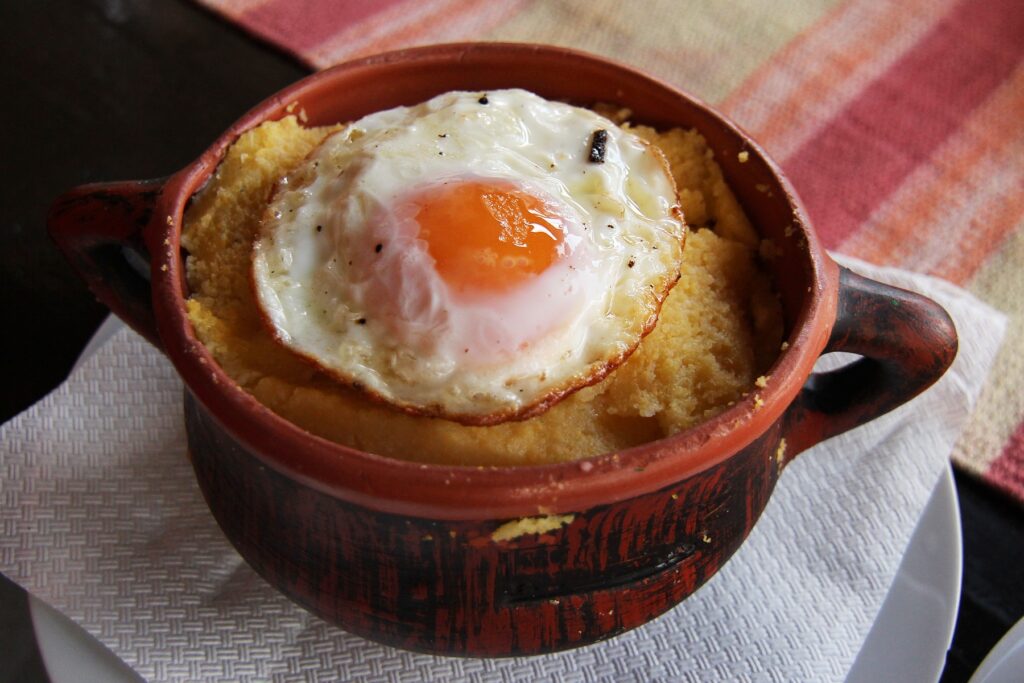
The problem with polenta is that on its own, if you make it plainly, it’s pretty bland. It’s a decent alternative to rice or potatoes, but it’s nothing special. The key to adding extra flavor is boiling it with something else. You can make a mix of half-water and stock or milk, you can add some butter, parmesan, or whatever cheese you might prefer. Herbs like thyme or bay leaf can also make a world of difference when it comes to polenta. Mix it with the right food, and it can be a true delicacy.
Moreover, polenta can also be a cake. Make it with sugar, some nuts, a bit of butter and some syrup and you’ve got yourself a good cake. Yep, you can eat polenta for breakfast, lunch, or dinner. Just make sure you don’t eat it for breakfast, lunch, and dinner. You know, pellagra and all.
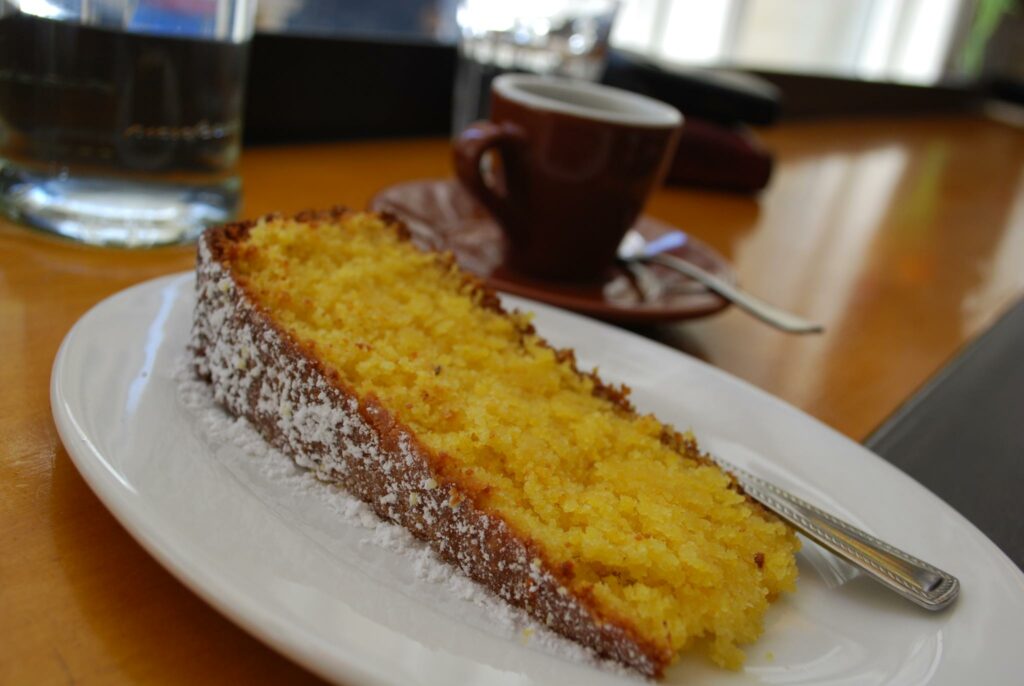
Polenta culture
From the northern Italian mountains, through the Swiss Alps and Slovenia, and all the way down to Romania, Ukraine, Moldova, and the Balkans, polenta has become a staple. This inconspicuous cornmeal mush came from across the ocean, saving and condemning entire generations. To this day, the term polentoni (= polenta eaters) is used as a slur in some areas (with variations for other languages).
Though still popular in some parts of northern Italy (now accompanied by meat, cheese, or vegetables), polenta cuts across geographical boundaries. It’s a common occurrence in many restaurants in one form or another.
It’s definitely one of the easiest historic foods you can try, even with no cooking experience. It can easily even make fancy meals, so it can be an interesting way to surprise your friends.
After all, it’s even a food fit for vampires, or at least those familiar with vampires. In Chapter One of Dracula by Bram Stoker is the commentary, “I had for breakfast more paprika, and a sort of porridge of maize flour which they said was ‘mamaliga’ [polenta], and egg-plant stuffed with forcemeat, a very excellent dish, which they call ‘impletata’”. If that’s not reason enough to try it, I don’t know what is.
